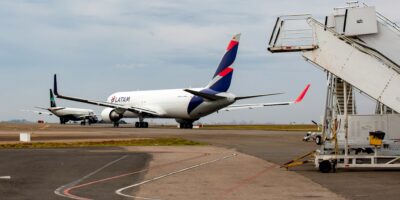Exploring St. Louis Lambert International Airport
St. Louis Lambert International Airport (STL) is a major aviation hub in Missouri. Serving millions of passengers each year, it’s an important gateway to the Midwest. Let’s delve into the history, operations, and ongoing developments at STL.
The History of STL
The airport traces its roots back to the 1920s. It was named after Albert Bond Lambert, a prominent aviator and supporter of aviation. With a passion for flying, Lambert was instrumental in the establishment of the airport. Originally founded in 1920 as an airfield, it officially became Lambert-St. Louis Flying Field in 1923. It marked a significant milestone in the infancy of American aviation.
Rapid growth ensued, particularly following World War II. The airport expanded its infrastructure to handle larger and faster aircraft. In the 1950s, it became a hub for TWA, a leading airline at the time. This period marked STL’s rise as a major aviation center.
By the 1970s, STL was bustling with both domestic and international flights. Its position strengthened following several key infrastructure upgrades, including the construction of new terminals and runways. The Gateway City was well connected to other metropolitan areas across the U.S. and beyond.
Infrastructure and Facilities
Currently, STL covers a vast area of over 2,800 acres. It consists of two main terminals: Terminal 1 and Terminal 2. Each is equipped with modern amenities to enhance passenger experience.
- Terminal 1 hosts a variety of airlines offering both domestic and international flights. It features four concourses (A, B, C, and D), although C and D have been consolidated. Passengers can enjoy shops, restaurants, and lounges during their wait.
- Terminal 2 primarily serves Southwest Airlines and its domestic routes. With efficient design, it accommodates numerous flights each day. Similar to Terminal 1, passengers have access to several dining and shopping options.
The airport encompasses multiple runways facilitating smooth operations. Its primary runways are capable of accommodating various aircraft sizes, from small commercial planes to wide-body jets. This versatility ensures that STL remains a key player in national and international air travel networks.
Transportation Links
Getting to and from Lambert Airport is straightforward. The airport is conveniently located near major highways, providing easy access for travelers. Interstate 70 runs conveniently alongside STL, connecting it to downtown St. Louis and beyond. For those using public transit, the MetroLink light rail system offers direct service to the airport, a boon for commuters and tourists alike.
Taxis and rideshares, such as Uber and Lyft, are readily available and offer another layer of convenience. Dedicated pickup zones ensure seamless transitions from ground to air travel. Additionally, car rental services are accessible at both terminals, catering to visitors who prefer exploring the region by road.
Passenger Experience
Lambert International is designed with the passenger in mind. Security screening is efficient, thanks to technological advancements and process improvements. This minimizes wait times and maximizes comfort.
Travelers appreciate the array of dining options within the terminals. From local favorites to well-known chains, there’s something to satisfy every craving. For shopping enthusiasts, the airport hosts a variety of stores, from boutiques to duty-free shops.
Art installations within the airport terminals add cultural value to the overall experience. STL participates in public art programs, featuring rotating exhibitions and permanent displays. This commitment to arts enriches the traveler’s journey, offering a touch of the region’s cultural heritage.
Recent Developments
The airport continues to invest in future growth and passenger satisfaction. Recent infrastructure upgrades focus on modernization and sustainability. Renovations to improve the terminals’ aesthetics and functionality are ongoing. Additionally, enhancements to air traffic control systems aim to increase efficiency and safety.
STL has undertaken numerous initiatives to promote sustainability. Implementing eco-friendly practices, the airport is working towards reducing its carbon footprint. This includes the installation of energy-efficient lighting systems and encouraging airlines to adopt fuel-saving practices.
The Future of STL
As travel demands evolve, so does Lambert Airport. Plans are underway to expand terminal capacity and upgrade facilities. Anticipating future trends, STL is exploring ways to incorporate innovative technologies in its operations. This foresight ensures the airport remains competitive and efficient in serving travelers worldwide.
Lambert International’s dedication to progress reflects its historical significance and commitment to meeting contemporary travel needs. Through innovation and adaption, STL maintains its role as a linchpin in aviation networks.




Subscribe for Updates
Get the latest articles delivered to your inbox.
We respect your privacy. Unsubscribe anytime.